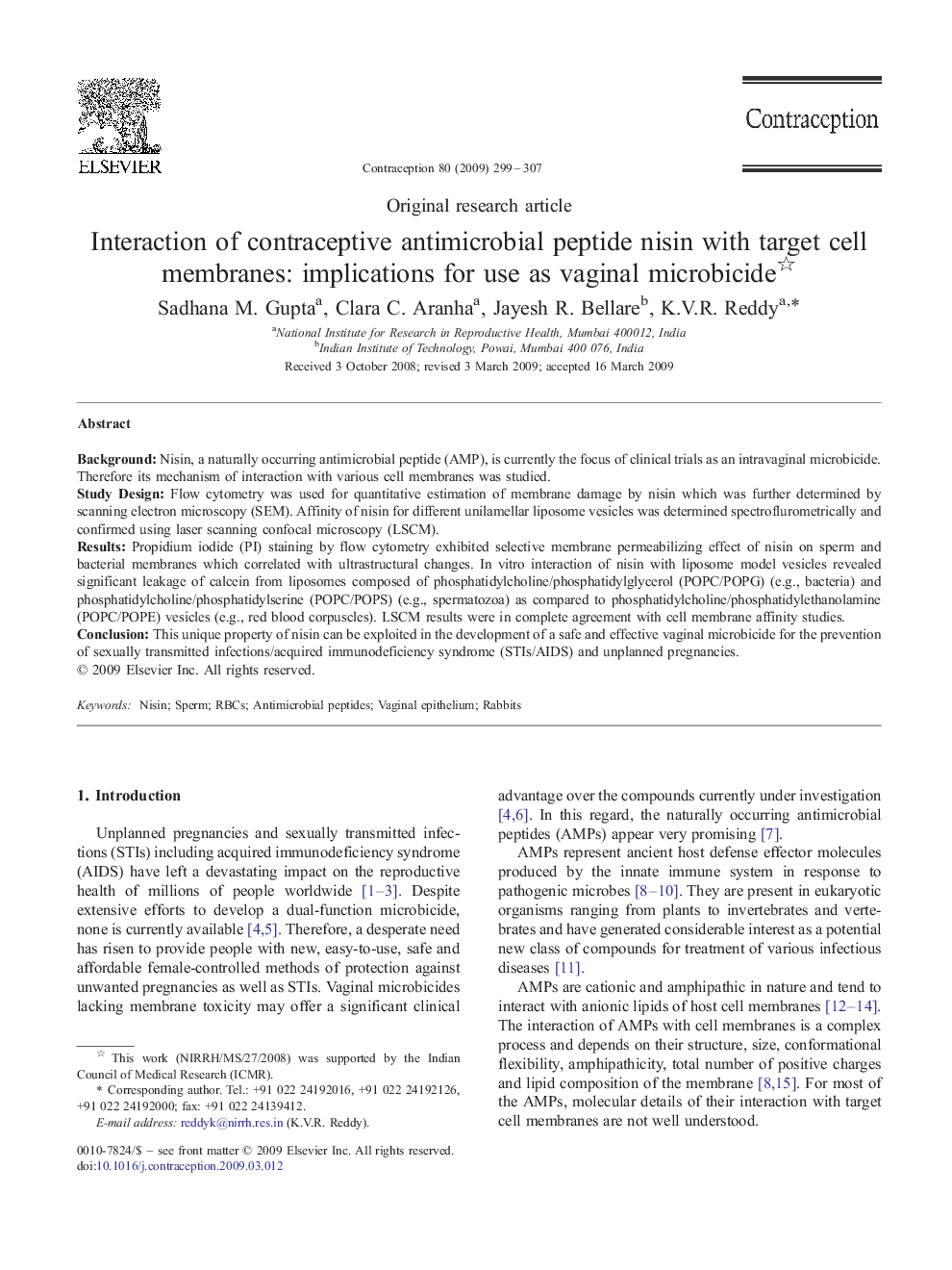| Article ID | Journal | Published Year | Pages | File Type |
|---|---|---|---|---|
| 3915396 | Contraception | 2009 | 9 Pages |
BackgroundNisin, a naturally occurring antimicrobial peptide (AMP), is currently the focus of clinical trials as an intravaginal microbicide. Therefore its mechanism of interaction with various cell membranes was studied.Study DesignFlow cytometry was used for quantitative estimation of membrane damage by nisin which was further determined by scanning electron microscopy (SEM). Affinity of nisin for different unilamellar liposome vesicles was determined spectroflurometrically and confirmed using laser scanning confocal microscopy (LSCM).ResultsPropidium iodide (PI) staining by flow cytometry exhibited selective membrane permeabilizing effect of nisin on sperm and bacterial membranes which correlated with ultrastructural changes. In vitro interaction of nisin with liposome model vesicles revealed significant leakage of calcein from liposomes composed of phosphatidylcholine/phosphatidylglycerol (POPC/POPG) (e.g., bacteria) and phosphatidylcholine/phosphatidylserine (POPC/POPS) (e.g., spermatozoa) as compared to phosphatidylcholine/phosphatidylethanolamine (POPC/POPE) vesicles (e.g., red blood corpuscles). LSCM results were in complete agreement with cell membrane affinity studies.ConclusionThis unique property of nisin can be exploited in the development of a safe and effective vaginal microbicide for the prevention of sexually transmitted infections/acquired immunodeficiency syndrome (STIs/AIDS) and unplanned pregnancies.
